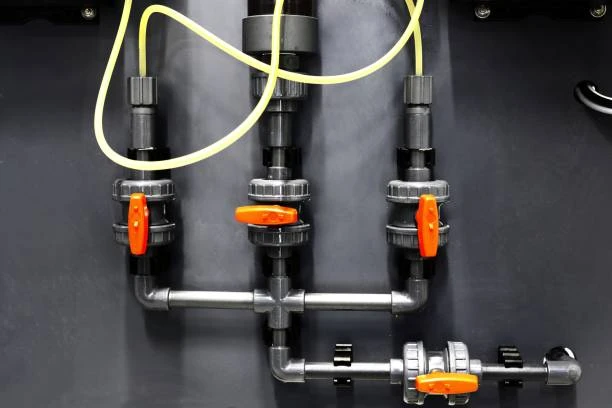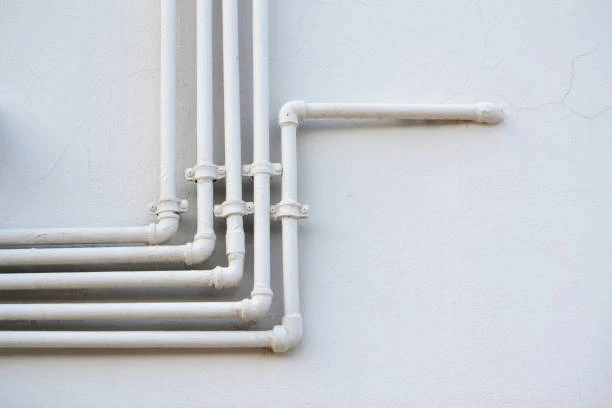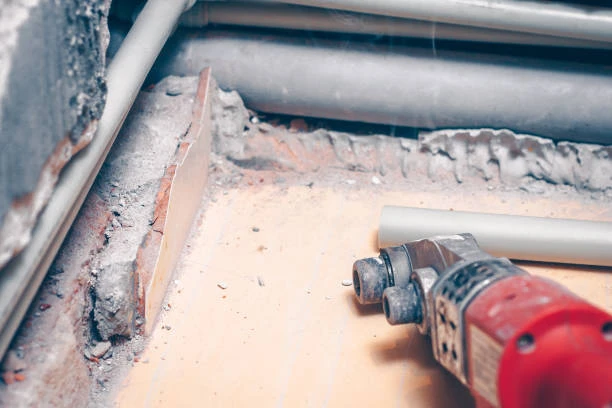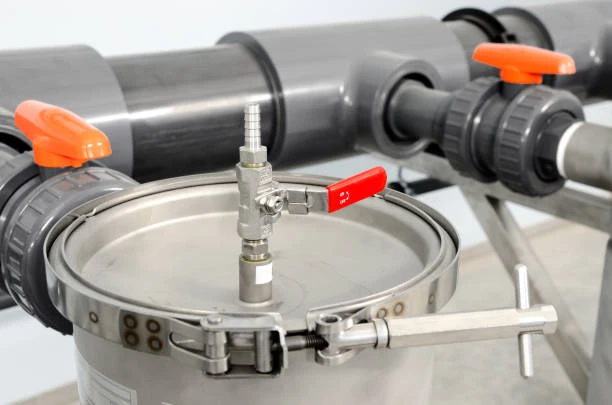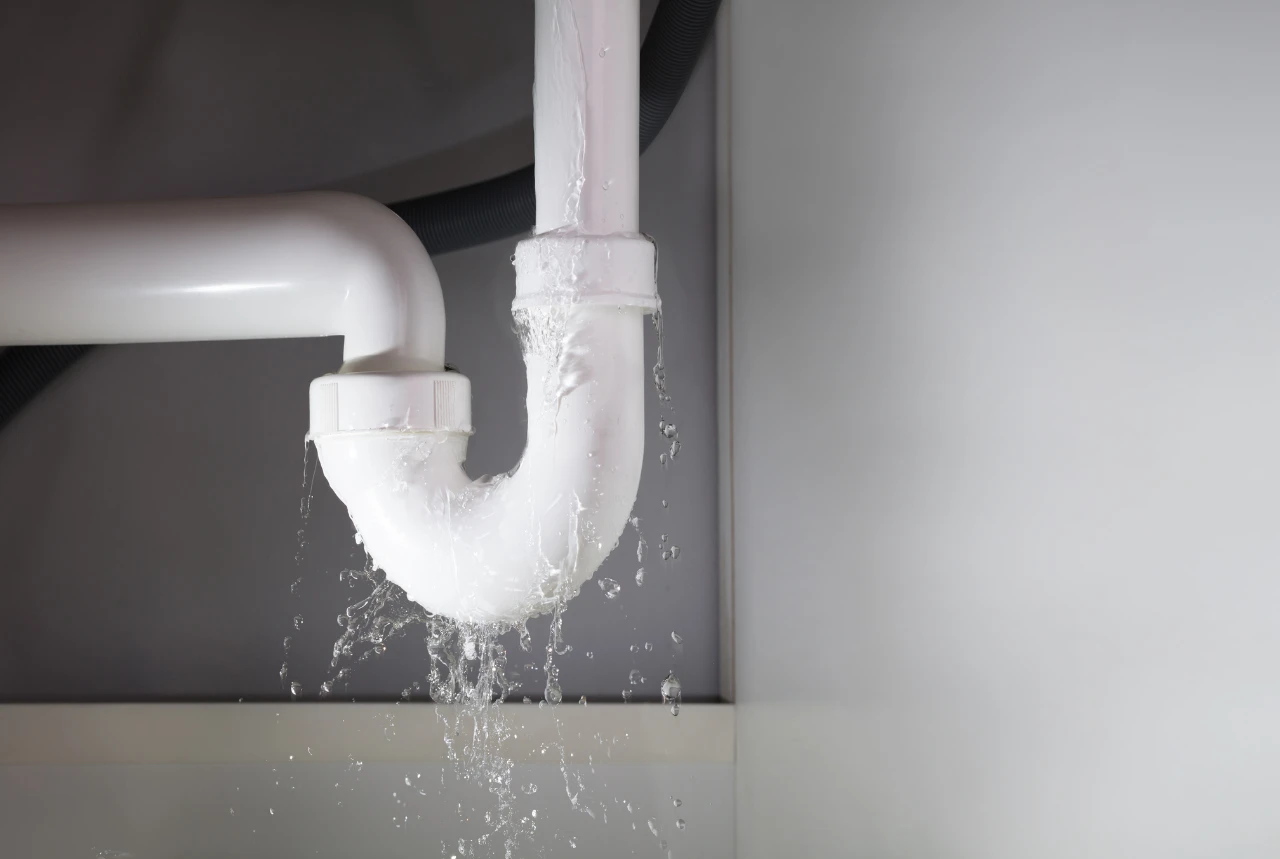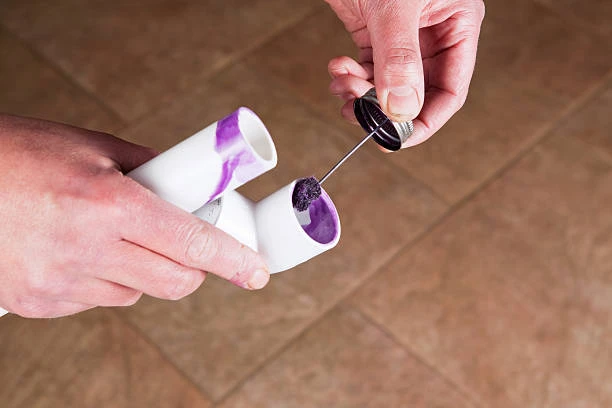When considering home renovations or new constructions, choosing the right windows is crucial. uPVC (unplasticized polyvinyl chloride) windows are popular for their durability and energy efficiency. As we look ahead to 2024, understanding uPVC window prices becomes essential for budgeting. In this article, we will explore the factors influencing costs, the benefits of PVC fittings, and what you can expect to spend.
Understanding PVC Windows
uPVC windows, which stand for unplasticized polyvinyl chloride windows, are a popular choice in modern construction and home renovation projects. Unlike traditional materials such as wood or aluminum, PVC offers several unique benefits that make it an attractive option for homeowners.
Composition and Construction
uPVC is a type of rigid plastic that is formulated specifically to resist impact, weathering, and deterioration. This rigidity gives PVC windows their strength and durability, making them an excellent choice for various climates and environments. The manufacturing process involves adding stabilizers to the PVC to enhance its longevity and resistance to ultraviolet (UV) radiation, ensuring that the windows maintain their appearance and functionality over time.
Energy Efficiency
One of the standout features of PVC windows is their energy efficiency. They are designed with multi-chambered frames that trap air, providing excellent thermal insulation. This means that PVC windows help keep your home warm in the winter and cool in the summer, significantly reducing the need for heating and cooling systems. Consequently, this can lead to lower energy bills and a reduced carbon footprint, making them an environmentally friendly option.
Aesthetic Versatility
uPVC windows are available in a wide range of styles, colors, and finishes. This versatility allows homeowners to choose designs that complement the architectural style of their home. Whether you prefer the classic look of casement windows, the sleek lines of sliding windows, or the modern appeal of tilt-and-turn windows, there are uPVC options to suit every taste. Additionally, PVC can be made to mimic the appearance of wood, providing the aesthetic appeal of traditional materials without the associated maintenance.
Low Maintenance Requirements
One of the major advantages of PVC windows is their low maintenance needs. Unlike wooden windows that require regular painting or staining to prevent rot and decay, PVC windows can simply be cleaned with soap and water. They do not require any special treatments, and their resistance to fading, discoloration, and corrosion means they maintain their attractive appearance for years.
Enhanced Security Features
Safety is a priority for any homeowner, and PVC windows are designed with security in mind. Most PVC window systems come with multi-point locking mechanisms that secure the window at several points along the frame, making them much harder to force open. This added layer of security provides peace of mind, especially in areas prone to break-ins.
Noise Reduction
Another notable benefit of PVC windows is their ability to reduce noise from outside. The multi-layered design not only provides insulation from temperature changes but also helps to block out unwanted sound, making your home a quieter, more peaceful place to live.
Key Benefits of uPVC Windows
- Energy Efficiency: PVC windows are designed to keep your home warm in winter and cool in summer. They help reduce energy bills.
- Durability: With a lifespan of 20 years or more, PVC windows resist weathering and corrosion. They are built to last.
- Low Maintenance: Cleaning PVC is simple. Just a wipe with soap and water is enough to maintain their appearance.
- Security Features: Most uPVC windows come with multi-point locking systems, enhancing home security.
- Variety of Styles: uPVC windows are available in various styles and colors, allowing homeowners to choose designs that suit their homes.
Factors Influencing PVC Window Prices
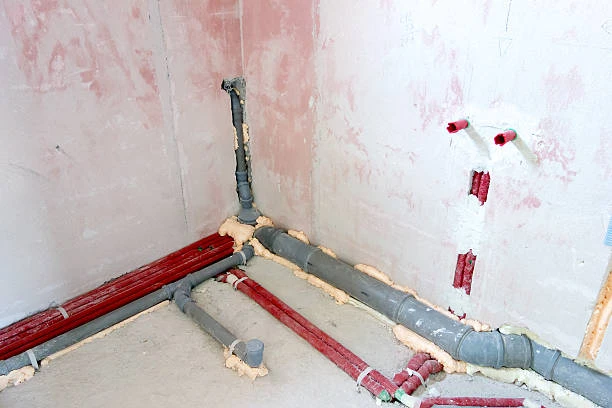
The cost of uPVC windows can vary widely based on several factors:
1. Window Size
Larger windows generally cost more. Standard sizes will be more affordable than custom sizes. Measure your openings carefully to determine the best fit.
2. Window Style
Different styles come with varying price tags. Casement, sliding, and tilt-and-turn windows each have unique costs. Casement windows tend to be more expensive due to their complexity.
3. Glass Type
The type of glass you choose significantly impacts the overall price. Double or triple-glazed glass offers better insulation but comes at a higher cost. Consider your energy efficiency needs when selecting glass.
4. Additional Features
Custom features, such as soundproofing or enhanced security options, can increase prices. Optional coatings and finishes also affect the final cost.
5. Installation Costs
Professional installation is recommended for optimal performance. Installation costs can vary based on location and complexity. It’s essential to factor this into your budget.
Average Costs of uPVC Windows in 2024
As of 2024, homeowners can expect the following average costs for PVC windows:
- Standard Casement Windows: $300 to $800 per window.
- Sliding Windows: $250 to $700 per window.
- Tilt-and-Turn Windows: $400 to $1,200 per window.
- Custom Sizes: Prices can exceed $1,000 depending on specifications.
These prices typically include both the window unit and installation. Always request quotes from multiple suppliers for the best deal.
Why Choose PVC Fittings for Windows?
Investing in PVC fittings for your windows is a smart choice. Here’s why:
- Cost-Effective: PVC windows offer long-term savings. Their energy efficiency can lower heating and cooling bills.
- Aesthetic Appeal: PVC fittings come in various finishes, mimicking the look of wood or metal. You can achieve the desired aesthetic without compromising durability.
- Sustainability: PVC is recyclable. Choosing PVC contributes to environmental sustainability.
- Sound Insulation: PVC windows provide excellent sound insulation, making your home quieter.
Maintenance Tips for PVC Windows
Maintaining PVC windows is simple but essential for longevity. Here are some tips:
- Regular Cleaning: Use mild detergent and water to clean frames and glass.
- Check Seals: Inspect seals periodically for wear and tear. Replace them if necessary to maintain energy efficiency.
- Lubricate Moving Parts: Use silicone spray to lubricate hinges and locks.
- Avoid Harsh Chemicals: Do not use abrasive cleaners that can scratch the surface.
- Inspect for Damage: Regularly check for signs of damage or wear. Addressing issues early can prevent costly repairs.
Conclusion
In 2024, PVC windows remain a popular choice for homeowners. Their durability, energy efficiency, and low maintenance make them an excellent investment. While prices can vary based on several factors, understanding these costs helps in budgeting effectively. Choosing the right PVC fittings can enhance your home’s value and comfort.
FAQs
1. What are the benefits of PVC windows?
uPVC windows are energy-efficient, durable, low-maintenance, and available in various styles.
2. How much do PVC windows cost?
Prices range from $250 to $1,200 per window, depending on size, style, and features.
3. Can I install PVC windows myself?
While DIY is possible, professional installation is recommended for the best results.
4. How do I maintain PVC windows?
Regular cleaning, checking seals, and lubricating moving parts will keep your windows in good condition.
5. Are PVC windows environmentally friendly?
Yes, PVC is recyclable, making it a sustainable choice for window fittings.
What is the cost range for UPVC triple glazed windows, and how does framecolor impact the price?
Cost Range for UPVC Triple Glazed Windows
When considering the installation of UPVC triple glazed windows, expect a wide price range depending on the size and specifications of the window. Generally, you can anticipate spending anywhere between $200 and $3,000 per window.
Size Considerations
- Large Windows: These typically fall on the higher end of the spectrum, ranging from $800 to $3,000.
- Small Windows: More budget-friendly, these are usually priced between $200 and $600.
Impact of Frame Color on Price
Another factor influencing the cost is the color of the window frame. Choosing a colored frame can increase your expenses by 10% to 25%. This is due to the additional materials and processes needed to achieve the desired finish.
Additional Variations
Keep in mind that prices can further vary by approximately 10% to 30% based on the specific type and design of the window you choose.
What are the cost ranges for UPVC French windows based on size, glazingquality, and supplier?
Cost Ranges for UPVC French Windows
When considering UPVC French windows, costs can vary significantly based on several factors, including size, glazing, quality, and supplier. Here’s a breakdown to help you understand what to expect when budgeting for these elegant windows.
Size
- Standard Sizes: Typically start at $300 and can go up to $1,500. The wider the window, the higher the cost.
Frame Color Options
- White Frames: Usually range from $400 to $1,500 per unit.
- Black Frames: These tend to be pricier, with costs ranging from $500 to $2,000 each.
- Various Other Colors: Generally fall between $500 and $2,500, allowing for more customization but at a premium.
Glazing and Quality
- Single Glazing: Generally more affordable but offers less insulation.
- Double or Triple Glazing: Provides better insulation and noise reduction, but expect an increase in price depending on the quality of the glass used.
Suppliers and Customization
- Basic Units: Often provided by various suppliers with competitive pricing based on standard dimensions.
- Customized Solutions: If you’re looking for specific glass types or hardware finishes, this will add to the overall cost. Custom orders can exceed the standard price range.
Each feature or customization you select can influence the final price of your French windows. Opting for higher quality materials or unique features can lead to a price that eclipses basic window options. Always consult with multiple suppliers to find the best fit for your needs and budget.
Why should homeowners consider triple glazing for their windows despite theextra cost?
Why Homeowners Should Consider Triple Glazing Despite the Extra Cost
When contemplating an upgrade from double to triple glazed windows, the initial increase in price—typically around 10-15% more—is a significant investment. However, the benefits of triple glazing extend well beyond the upfront cost, making them a smart choice for many homeowners.
Enhanced Energy Efficiency
Triple glazed windows offer superior insulation compared to their double glazed counterparts. This enhanced thermal barrier can substantially reduce heat loss, leading to lower energy bills. Homeowners in colder climates will find this particularly advantageous, as the difference in temperature between your cozy living room and the chilly outdoors becomes less pronounced, maintaining indoor warmth.
Improved Comfort
With triple glazing, the comfort level within your home improves noticeably. The extra layer not only helps in retaining heat during winter but also keeps your indoor environment cooler during warmer months. This makes your home more comfortable year-round, without over-relying on heating and cooling systems.
Noise Reduction
A significant, yet sometimes overlooked, advantage of triple glazing is its ability to reduce external noise. For those living in urban areas or near busy roads, this can result in a quieter, more serene home environment, enhancing your overall quality of life.
Long-Term Savings
While the initial expenditure can be substantial, triple glazed windows are a long-term investment. The savings on energy bills and potentially increased property value can offset the higher initial outlay over time.
Is Triple Glazing Right for You?
Before deciding on triple glazing, consider your specific needs and environment. If you reside in a region where temperature fluctuations are severe, the energy savings and comfort level improvements may justify the cost. Conversely, in milder climates, evaluate whether the additional expenditure aligns with your home’s efficiency goals.
By balancing these factors, homeowners can make informed decisions, ensuring that their investment contributes positively to both comfort and financial savings in the long run.
Why is vinyl or Unplasticized Polyvinyl Chloride (UPvc) considered superior to
wood or fiberglass for windows?
Why Choose Vinyl or UPVC for Windows Over Wood or Fiberglass?
When it comes to selecting materials for windows, homeowners often prioritize durability, aesthetic appeal, and low maintenance. Vinyl, or its more refined version, Unplasticized Polyvinyl Chloride (UPVC), stands out as a superior choice for several compelling reasons.
1. Durability and Strength
Vinyl and UPVC are renowned for their resilience. Unlike traditional PVC, UPVC is formulated to be exceptionally robust—up to 50 times stronger. This strength ensures that UPVC windows, especially those reinforced with a steel core and triple glazing, have an impressive lifespan of 25 to 40 years. While aluminum windows offer similar longevity, typically between 20 to 50 years, they require more maintenance to preserve their quality. Wood, on the other hand, is heavily dependent on consistent upkeep, which can be time-consuming and costly.
2. Minimal Maintenance
One of the standout features of vinyl and UPVC windows is their low maintenance requirements. These materials resist the elements exceptionally well, meaning they don’t warp, rot, or require repainting. In contrast, wood windows often need regular treatments to maintain their appearance and structural integrity. Fiberglass, while more durable than wood, can still fade over time and may need occasional upkeep.
3. Cost-Effectiveness
Vinyl and UPVC windows offer excellent value for money. With billions of dollars in sales, their popularity is a testament to their economic advantages. They are typically more affordable than wood and aluminum alternatives, making them an attractive option for budget-conscious homeowners without sacrificing quality.
4. Aesthetic Flexibility
While some may argue wood offers unparalleled beauty, modern vinyl and UPVC windows come in a variety of colors and finishes designed to mimic natural materials. This flexibility allows homeowners to achieve the desired look without the headaches associated with maintaining actual wood.
In summary, vinyl and UPVC windows outperform wood and fiberglass due to their remarkable durability, low maintenance, cost-effectiveness, and aesthetic versatility, making them a wise choice for any home improvement project.
How does the color of UPVC French windows affect their cost and energy efficiency?
How Does the Color of UPVC French Windows Affect Their Cost and Energy Efficiency?
When selecting UPVC French windows, the choice of color can significantly impact both their cost and energy performance. Here’s how:
Impact on Cost
- Custom Color Premium
Choosing non-standard or custom colors for your UPVC windows usually comes with an additional charge. Typically, manufacturers increase the price by around 10% for these bespoke options. This premium arises from the extra production processes and materials required to achieve unique hues.
Impact on Energy Efficiency
- Heat Absorption
Dark-colored windows, such as navy or black, tend to absorb more heat from the sun compared to lighter shades like white or cream. This can lead to increased interior temperatures for homes in regions with hot summers, ultimately impacting your energy bills for cooling. Opting for lighter colors can help maintain a cooler indoor environment, reducing the need for heavy reliance on air conditioning.
By considering both the aesthetic and functional implications of color, you can make a more informed decision that aligns with your budget and energy efficiency goals.
How long do UPVc windows with a steel core and triple glazing typically lastcompared to aluminum and wood windows?
Lifespan of Different Window Types
When considering the durability of various window materials, UPVC windows featuring a steel core and triple glazing generally offer a lifespan ranging from 25 to 40 years.
In comparison, aluminum windows typically endure anywhere from 20 to 50 years, depending on environmental conditions and maintenance practices.
The longevity of wooden windows is more variable, heavily influenced by the quality of maintenance. Proper care can lead to a longer lifespan, but neglect can significantly shorten it.
What additional features can be added to UPVC French windows to enhance their thermal and sound protection properties?
Enhancing UPVC French Windows for Better Thermal and Sound Protection
To boost the thermal and sound protection properties of UPVC French windows, several features can be considered:
- Aluminum Exterior Coating: Adding an exterior coating of aluminum can significantly enhance the durability of UPVC windows, providing an additional layer of protection against external elements.
- Low-E Glass: Incorporate operable Low-E (low emissivity) glass to improve energy efficiency. This type of glass reduces the amount of ultraviolet and infrared light that passes through the window, while still allowing visible light to enter. This can help maintain a consistent indoor temperature and reduce heating and cooling costs.
- Condensation Resistance: Opt for windows designed with advanced condensation resistance. These types reduce moisture buildup on the window surface, enhancing comfort and preventing potential damage over time.
- Ventilation Options: Look for windows that offer superior ventilation solutions. While ensuring you have the ability to control airflow, be prepared to install blinds or shades if you need to manage sunlight exposure effectively.
These enhancements can not only improve the comfort of your home but also contribute to energy savings and increased property value.
What are the cost ranges for different types of custom German windows per unit?
When considering custom German windows, it’s important to understand the cost variations based on the type of window. Here’s a breakdown of the price ranges you can expect per unit:
- Picture or Fixed Windows: These come at a cost ranging from $70 to $2,000. The simplicity or complexity of the design often influences the price.
- Slider Windows: Expect to pay between $80 and $1,000 for these versatile windows, which are known for their ease of use and modern appeal.
- Double Hung Windows: These classic and functional windows typically range from $150 to $1,200, offering a balance of tradition and innovation.
- Casement Windows: Prized for their efficiency and functionality, these windows can cost between $250 and $1,500, depending on size and features.
- Tilt Turn Windows: Known for their dual-functionality, which enables tilting and swinging open, these windows have a price tag ranging from $250 to $2,000.
- Awning Windows: For a budget-friendly option, awning windows are priced between $150 and $800, providing excellent ventilation capabilities.
These price ranges provide a general overview, but the final cost can vary based on additional features, materials, and customizations.
Why might spray painting be a better option for Upvc window frames, andwhat are the associated costs?
Why Choose Spray Painting for UPVC Window Frames?
Spray painting might be the superior choice for UPVC window frames due to its enhanced ability to adhere to surfaces with low surface energy. Traditional painting methods, such as using a brush or roller, often struggle to achieve a smooth, long-lasting finish on UPVC because the paint doesn’t adhere well.
Benefits of Spray Painting:
- Improved Adhesion: Spray paint can cover surfaces more evenly and with better adhesion, minimizing the risk of peeling or flaking over time.
- Professional Finish: The spray application results in a smooth, even coat that often looks more polished compared to brush or roller methods.
- Time Efficiency: Spray painting generally takes less time per window, as it covers a larger area quickly and with more precision.
Cost Considerations
DIY Approach:
- Cost Range: Expect to spend around $200 to $500, which includes the cost of spray paint and necessary supplies. While initial costs may be higher than using traditional methods, the results typically justify the expenditure.
Professional Service:
- Pricing: Hiring professionals can set you back between $1,000 and $3,500 for ten windows. This cost reflects the high-quality finish and longevity of the paint, not to mention the saved time and effort on your end.
Ultimately, while spray painting might require a larger upfront investment, the increased durability and aesthetic quality often make it a more economical choice in the long run.
How much does it cost to paint UpVC window frames, and what supplies are
needed?
How Much Does It Cost to Paint UPVC Window Frames?
Painting UPVC window frames can be a cost-effective way to rejuvenate your windows and enhance your home’s curb appeal. Here’s a breakdown of what you can expect to spend and the supplies you’ll need:
Labor Costs
- Hourly Rate: Typically, hiring professionals will set you back around $15 to $40 per hour for each worker.
- Team Size: Many jobs require at least two workers, impacting the total cost significantly.
Material Costs
- Paint Supplies:
- For a project involving 8 to 14 windows, supplies generally range from $100 to $400.
- Total Project Estimate:
- When factoring in both labor and materials, the complete cost can be anywhere between $1,000 and $5,000 for the same number of windows.
Equipment Rentals
- Special Equipment: Some tasks might require additional equipment, which is available for rent at rates between $50 and $80.
Additional Considerations
- Warranty Check: Before starting, verify whether painting the frames might void existing warranties.
- Quality Marks: It’s advisable to choose materials from suppliers who offer the RAL quality mark for reliability.
With this information, you can better plan your project and budget accordingly, ensuring the transformation of your UPVC window frames is smooth and successful.
What factors primarily affect the cost of painting UPVc windows?
When considering the cost of painting UPVC windows, several pivotal factors come into play. Here’s a breakdown of what primarily influences the overall expense:
1. Window Size and Quantity
- Larger windows require more paint, increasing the cost.
- More windows mean more materials are necessary, impacting the total expense.
2. Supplies Needed
- Essential supplies include paint, primer, brushes, and rollers.
- For DIY projects, the cost of these materials for painting several windows typically ranges from $20 to $40.
- High-quality paint and primer not only ensure a better finish but also enhance the longevity of the paint job.
3. Labor Costs
- Hiring a professional painter can range between $15 and $40 per hour, depending on the region and the painter’s expertise.
- Opting for contractors involves budgeting between $300 to $2500, influenced by the size and complexity of the project.
4. Color Choice
- Standard white paint is generally more affordable compared to custom color combinations because it’s often mass-produced.
5. DIY vs. Professional Painting
- A do-it-yourself approach is cost-effective, ranging from $25 to $50 per window.
- Professional services, although more expensive, offer faster completion time and expert-level finishing, especially for prominent areas like the house frontage.
By weighing these factors, homeowners can make informed decisions based on their budget, preferences, and ability to take on a DIY project.
How much does it cost to paint UpVC windows, including labor and supplies?
Transforming the appearance of your UPVC windows with a fresh coat of paint can range significantly in cost. Here’s a breakdown to guide you through budgeting for this project:
Professional Painting Costs
If you choose to hire professional painters, expect to spend anywhere from $200 to $2,000. This wide range depends on factors like the number of windows, their size, and your local labor market.
- Labor Costs: Painters typically charge between $15 and $40 per hour. This rate varies based on the painter’s experience and your geographic location.
DIY Painting Costs
Opting to do the job yourself can be a more economical option, especially if you’re comfortable with DIY projects.
- Supplies: For DIY enthusiasts, factoring in supplies such as primer, paint, brushes or rollers, and masking tape will cost about $20 to $40. These supplies are generally sufficient to cover 8 to 14 windows.
While DIY painting can save money, it’s important to consider the time and effort involved. Whether hiring a pro or tackling it yourself, refreshing your UPVC windows can enhance your home’s curb appeal considerably.
What is the process for preparing and painting UpVc window frames?
How to Prepare and Paint UPVC Window Frames
Transforming your UPVC window frames with a fresh coat of paint can rejuvenate the look of your home. Here’s a step-by-step guide to ensure your painting project is a success.
Preparation Steps
- Thorough Cleaning
- Start by washing the window frames with a mild dish soap and water mixture. This will remove any dirt, grease, or residue.
- Sanding the Surface
- Once the frames are completely dry, use fine-grit sandpaper or an abrasive sponge to gently sand the surface. This key step helps the paint adhere better by creating a slightly rough texture.
- Dust Removal
- After sanding, it’s crucial to eliminate all dust. Use a damp cloth or tack cloth to wipe away any particles, ensuring a clean surface ready for painting.
Painting Process
- Choosing the Right Paint
- Opt for a premium acrylic paint specifically designed for adhesion to UPVC materials. Brands like Krylon Fusion or Rust-Oleum’s Painter’s Touch are excellent choices that ensure durability and a long-lasting finish.
- Applying the Paint
- Use a brush or spray applicator to apply the acrylic paint evenly. It’s often recommended to start with a primer coat for extra adherence, followed by two thin coats of color for optimal results.
- Drying and Curing
- Allow the paint to dry thoroughly between coats. Typically, waiting 4-6 hours between applications should suffice, but always check the manufacturer’s instructions for specific drying times.
By following these steps, your UPVC window frames will not only look new but also withstand the elements for years to come. Happy painting!
Why is it important to use Fensa-approved installers for windowimprovements?
Why Choose FENSA-Approved Installers for Your Window Improvements?
Opting for FENSA-approved installers is essential when enhancing your home with new windows. Here’s why:
- Compliance with Building Regulations: FENSA approval ensures that your window installation meets the necessary building regulations. This compliance is crucial to ensure your renovations are safe and legally sound.
- Energy Efficiency Certification: A FENSA certificate is proof that your windows are energy-efficient. This certification can contribute to lower energy bills and make your home more environmentally friendly, appealing to eco-conscious buyers if you decide to sell.
- Peace of Mind: Knowing that your installer is FENSA-approved gives you confidence in the quality of their work. These professionals have the expertise and certification to handle your window improvements correctly.
- Resale Value: When it comes time to sell your home, having a FENSA certificate can enhance your property’s value. Prospective buyers are reassured by the certification, knowing they won’t need to worry about potential issues with the windows.
While FENSA does not cover installations like conservatories or alterations to existing rooms, it’s wise to hire reliable installers who follow industry standards like the RAL guidelines for those projects. If you are considering other window options such as uPVC, it’s worth noting their budget-friendly and low-maintenance attributes, adding further value to your home improvements.



